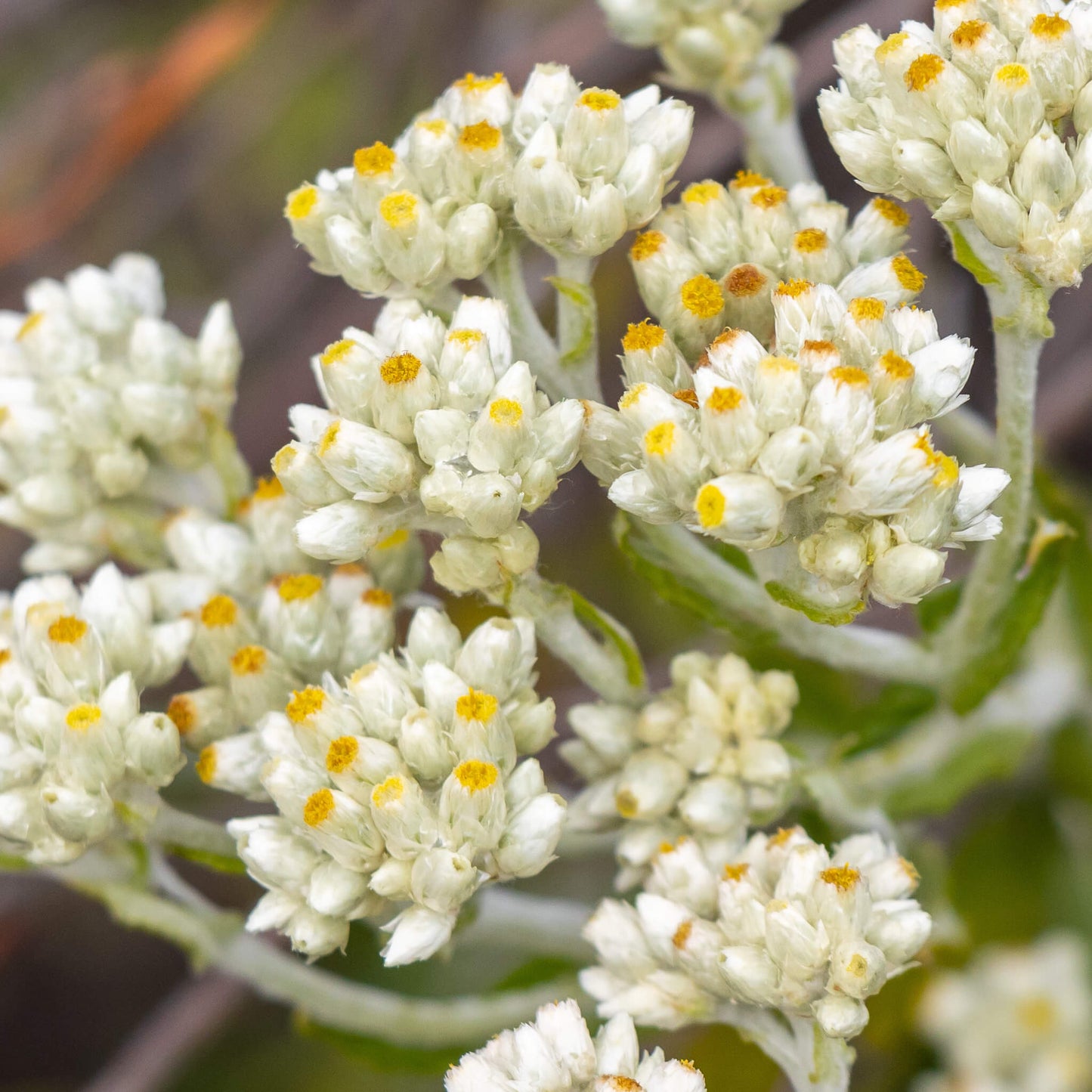For successful seedlings,
see the growing notes at the bottom of the page!
Rabbit tobacco (Pseudognaphalium obtusifolium) is an annual or biennial plant in the aster family. In a single growing season, it develops flowers and seeds, but it can also grow as a biennial, forming a basal rosette of leaves in the first season, then remaining dormant over winter. In the following spring, the plant resumes growth and produces a stem with clusters of flowers. The undersides of the leaves, stems, and base of the bracts are covered in dense, woolly hairs, emitting a pleasant maple syrup scent. The small white flower heads with yellow edges, resembling tiny buds, open at maturity to release seeds dispersed by the wind. Rabbit tobacco fits well in Quebec wildflower gardens, adding a rustic and soft touch.
Medicinal and Culinary Uses
Rabbit tobacco is astringent, antispasmodic, diaphoretic, emollient, and a mild stimulant. It is used to treat ailments such as colds, fevers, and sore throats. As an infusion, it can relieve pain and soothe inflammation, while its emollient properties make it a useful external remedy for wounds and skin conditions.
Ecological Roles
Rabbit tobacco plays an important ecological role, particularly for Quebec’s local wildlife. It serves as a larval host for the American lady butterfly, providing essential habitat for this native species. The plant also attracts various pollinators that visit its flowers for nectar. With its rapid wind dispersal, rabbit tobacco contributes to the biodiversity of prairies and natural habitats, enriching ecosystems and providing refuge for local insects.
Rabbit tobacco seeds require cold stratification to ensure germination. See the cultivation notes below for more details.
Akène cannot assume any responsibility for the use of plants for therapeutic purposes. Always seek advice from a professional before using a medicinal or edible plant.
Sowing and Growing
Technical Details
Seeds per packet: 750
Family: Asteraceae
Scientific name: Pseudognaphalium obtusifolium
Life cycle: Self-seeding annual
Hardiness zone: 3
Soil type: Sandy to loamy
Soil moisture level: Dry to medium
Soil - additional attributes: Well-drained, poor
Light: Sun, part shade
Blooming: August to October
Spacing: 40 cm
Height: 90 cm
Deer resistance: Moderate
Stratification: 60 days
Scarification: No
Germination time: 20 to 30 days
Sowing depth: Surface






